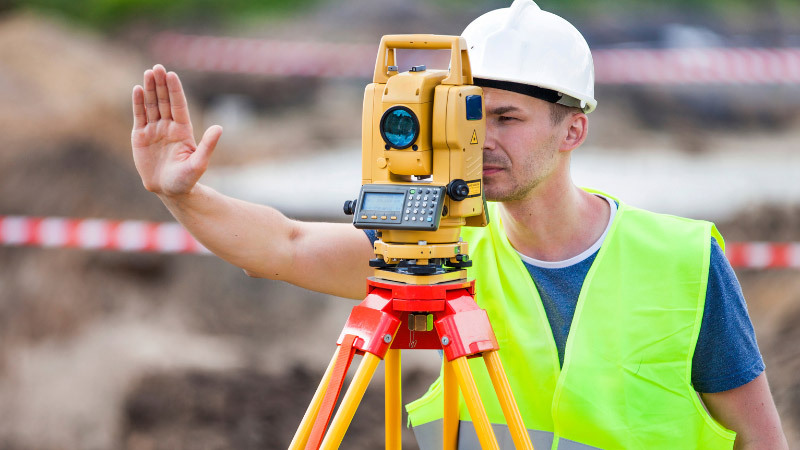
Terrestrial Laser Scanning (TLS) stands as a groundbreaking technology revolutionizing the way we capture and analyze spatial data. Its intricate process and varied applications make it a pivotal tool across multiple industries.
Introduction to Terrestrial Laser Scanning
Terrestrial Laser Scanning, often abbreviated as TLS, encompasses a sophisticated method of capturing precise three-dimensional data of objects and environments using laser light. This cutting-edge technology plays a vital role in mapping, surveying, and monitoring landscapes, buildings, and various other elements.
How Terrestrial Laser Scanning Works
TLS operates through the emission of laser beams, which bounce off surfaces and return to the scanner, measuring distances with exceptional accuracy. The equipment typically includes a laser scanner, tripod, and software for data processing, enabling detailed point cloud creation.
Advantages of Terrestrial Laser Scanning
The precision and accuracy of TLS stand out as its primary advantages. Its ability to capture intricate details of objects and environments with minimal error margins makes it invaluable across industries. In construction, TLS facilitates precise as-built documentation, aiding in renovations, clash detection, and construction monitoring. Architects and engineers benefit from its ability to create detailed 3D models that enhance design accuracy.
Moreover, TLS plays a crucial role in archaeological discoveries and preservation efforts. Archaeologists utilize this technology to create high-resolution maps of archaeological sites, enabling meticulous analysis without disturbing delicate artifacts. The ability to digitally preserve historical sites ensures their conservation for future generations.
In forestry, TLS contributes significantly by providing detailed information on forest structure and biomass. It aids in forest inventory management, ecological research, and monitoring forest health. This technology enables foresters to assess tree heights, canopy structures, and variations in terrain, facilitating informed decision-making for sustainable forest management.
Applications in Various Industries
In the realm of construction, TLS facilitates precise as-built documentation, aiding in renovations and new builds. Archaeologists utilize this technology for intricate site mapping, while forestry experts employ it for detailed forest structure analysis.
Challenges and Limitations of TLS
While TLS offers unparalleled precision, it faces challenges in handling and processing extensive datasets. The sheer volume of point cloud data captured during scanning requires specialized software and substantial computational resources for processing. Managing and interpreting this large volume of data can be time-consuming and resource-intensive.
Furthermore, TLS performance can be impacted by environmental factors such as adverse weather conditions, varying light intensities, and the presence of obstructions. Fog, rain, or bright sunlight can affect the accuracy of scans, limiting its effectiveness in certain outdoor settings. Overcoming these limitations requires ongoing technological advancements and refining operational methodologies.
Future Trends and Innovations in TLS
The future of Terrestrial Laser Scanning is poised for significant advancements. Emerging technologies aim to enhance the capabilities of TLS systems, making them more portable, user-friendly, and cost-effective. Miniaturization of equipment and the development of integrated systems will make TLS more accessible across various industries.
Anticipated advancements include increased automation in data processing, enabling real-time analysis and interpretation of scan data. This will streamline workflows and reduce the time required for post-processing. Additionally, improvements in scanning speed and range will expand the application areas of TLS, potentially revolutionizing fields like autonomous vehicles, urban planning, and disaster response.
As research and development continue to drive innovation in TLS, collaborations across disciplines will pave the way for groundbreaking applications and further integration into diverse industries.
Conclusion
Terrestrial Laser Scanning’s transformative impact across industries is undeniable. Its precision, coupled with evolving technology, promises an exciting future for spatial data capture and analysis.
FAQs
- Is Terrestrial Laser Scanning expensive?
- While initial costs may vary, the efficiency and accuracy often outweigh the initial investment.
- What are the primary limitations of TLS?
- Challenges include data processing complexities and environmental conditions affecting scanning accuracy.
- Can TLS be used in environmental monitoring?
- Yes, TLS is instrumental in assessing and monitoring environmental changes.
- How does TLS benefit the construction industry?
- It aids in precise documentation and streamlines construction processes, reducing errors.
- Are there advancements expected in TLS technology?
- Anticipated advancements include increased portability and enhanced scanning capabilities.






